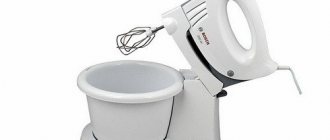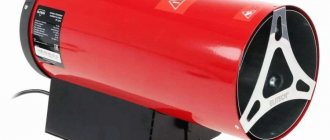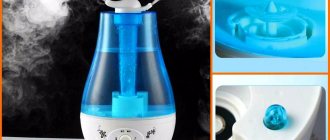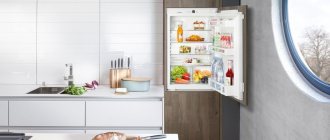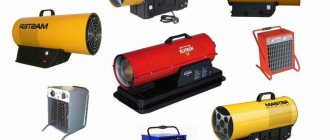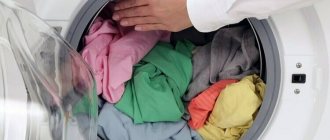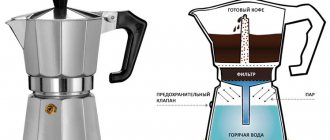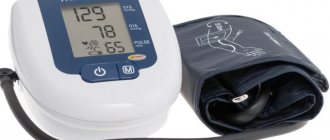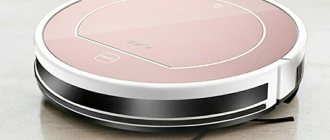Arbitrary movement of air in buildings and structures can have certain consequences in the form of mixing air, and accordingly changes in its temperature, smell, humidity and other properties. To control the corresponding process and avoid drafts, special equipment is used - thermal air curtains. They are energy-saving equipment and allow you to establish efficient operation of air conditioning, heating and ventilation systems in shopping and entertainment centers, production workshops and other facilities where this is necessary.
What is an air-thermal curtain, areas of application, control and functions
The air curtain is a powerful fan capable of creating a strong and directed stream of air. This jet becomes an invisible barrier to the natural movement of air, separating adjacent spaces. At the same time, the air flow does not interfere with the free movement of people. Various objects with increased cross-country ability need to perform the corresponding function. We are talking not only about office, public and industrial facilities, but also about residential buildings.
Thus, the main function of this equipment is to separate zones with different temperature conditions. Cold or, conversely, hot outside air cannot enter the room through open gates, entrance doors and other openings. At the same time, heating or air conditioning systems will operate with a minimum amount of losses, significantly saving energy. That is why the very possibility of using such equipment is a sign of energy saving.
Design and principle of operation
Modern air curtains are not characterized by the most complex design and operating principle, but they have two fundamental differences in the design of the units. They can be with or without a heating function, and the heat source can be electricity or hot water circulating in a radiator.
- Electric thermal curtains
- Water thermal curtains
The device itself is a rectangular metal case made of galvanized or stainless steel sheet. Inside there is a fan, a motor, a control unit, and if the curtain is thermal, then the air heater is an electric heating element or a water heater.
The principle of operation is very simple. A high-speed fan takes air, drives it through the heater, then a dense, significantly accelerated flow of warm air is blown through a special nozzle in the desired direction, creating an invisible door.
Controls and functions
The curtain is controlled using a wired remote control, which is installed next to the device. To automatically control the air temperature, the remote control has a built-in thermostat that turns the heater off and on when the set temperature is reached. Low-power devices with a small installation height, up to 2 meters, are most often equipped with controls located on the housing to reduce cost.
The presence of a thermostat is especially important when installing thermal curtains in vestibules, rooms with a small volume of air, and not so much for the sake of saving energy, but to prevent overheating of the device and burnout of tubular heaters. Some models are equipped with a duplicate remote infrared control panel with a signal receiver in the wall-mounted remote control, or less often in the body of the device itself.
Several fan performance modes are available for control, setting the desired air temperature in the room, as well as selecting the heater power level or turning off the heating function altogether.
Advantages and disadvantages
- Among the main advantages, we can highlight the uniqueness of the device, since nothing alternative has been invented with similar functionality at an affordable price.
- In most cases, installation and connection are quite simple, for models with an electric heat source. The simple design allows you to quickly and easily carry out all necessary maintenance and repair work.
- They are quite economical when operating devices as their main function - creating a barrier for the movement of air masses (fan operating mode without heating the air).
- Additional power required. To heat the air passing through the curtain at high speed, on average 6-9 m/s, a powerful heater is provided. Therefore, before you buy an electric heat curtain, you need to find out whether there is the necessary power reserve in the electrical network. On average, per meter of opening width, you need at least 6 kW to heat the air by 20°C.
- So-called water heat curtains require connection to a heating system. Mixing units are used to regulate the temperature. Not all facilities have such an opportunity; as a rule, these are large enterprises or buildings with their own boiler room.
- The main and only negative is the noise from the fans. All air curtains, without exception, operate quite noisily; this type of equipment should not be placed close to places where people stay for a long time.
The best thermal curtains with vertical and horizontal installation
Universal thermal curtains with the ability to secure them in any position are in high demand. Their design allows the equipment to be best adapted to individual operating conditions.
Hyundai H-AT2-50-UI531
This cute model from the famous South Korean brand is designed for installation near the front door or window. It connects to a standard 220 volt network. The built-in fan creates a stable supply of warm air, thereby achieving effective protection against drafts.
The user can choose the desired thermal mode or disable the heating option altogether. There is a light indication and automatic overheating protection.
Main characteristics:
- dimensions 850x240x220 mm;
- weight 10 kg;
- maximum heating power 4500 W;
- air supply 1000 m3/hour;
- Recommended installation height above the floor is 2.2 m.
Pros of Hyundai H-AT2-50-UI531
- Quite high performance.
- Reliable fastening allowing installation of the device in any position.
- Convenient control using a remote control.
- Modern design.
- Long service life.
Cons of Hyundai H-AT2-50-UI531
- The model is heavy and bulky.
- Relatively high cost.
Conclusion. Such a curtain is needed where there are increased requirements for the level of comfort, and the purchase price and current operating costs are not decisive. The technical characteristics of the model make it possible to completely eliminate drafts through an open front door, even in very cold weather.
Tropic M-3
The small Russian-made thermal curtain Tropic 3-M is perfectly adapted to domestic operating conditions. Its body is made of galvanized steel and has an additional polymer coating. A fan and a needle-type heater are installed inside. Supply voltage 220 volts. IP21 dust and moisture protection class.
The model is equipped with a remote control with the function of selecting modes and adjusting the temperature. The electrical circuit includes an overheat protection circuit breaker. The noise level of the three-speed fan is 46 dB.
Main characteristics:
- dimensions 620x162x130 mm;
- weight 4 kg;
- maximum heating power 3000 W;
- air supply 380 m3/hour;
- Recommended installation height above the floor is 2.3 m.
Watch the product video
Pros Tropic M-3
- Simple and reliable design.
- Good performance.
- Economical.
- Light weight and compact dimensions.
- Long service life.
- 3 year warranty.
Cons Tropic M-3
- You can feel the fan noise.
- Not the most aesthetic design.
Conclusion. A reliable and economical model suitable for a single-leaf entrance door. Moderate thermal power at high air flow speed turned out to be sufficient for use in private homes, shops and offices with a small flow of visitors. Minimal maintenance and ease of adjustment will appeal to any user.
How to choose a thermal curtain
To correctly select the described device, it is necessary to take into account several basic technical parameters.
- Placement of the device in a horizontal or vertical position;
- According to the heating method (if necessary) - electric heating element or water heater;
- The height of the opening or installation of equipment is determined by the speed of air flow at the exit of the nozzle - the efficiency of the jet.
- The width of the opening determines the length of the device and its power.
Recommendations
The length of the device must match the size of the opening and completely cover it. In terms of the efficiency of the air flow structure, it is best to provide a certain reserve, this is especially true at high-altitude objects, as well as where there are often strong winds. To solve global problems, preference should be given to industrial options. When choosing, it is important to pay attention to the power and connection of the electric heat curtain to the network.
- Electric thermal curtains 220V single-phase
- Electric air curtains 380V three-phase
Each consumer must choose the optimal model for himself, understanding that incorrectly selected equipment will not bring the desired effect. It’s easier to figure out how to choose a thermal curtain with the help of specialists.
Manufacturers of thermal curtains
It is important to pay attention to the equipment manufacturer. The Russian market offers a wide range of domestic manufacturers. The most popular of them are Teplomash (St. Petersburg), Tropic (Moscow), IZTT Izhevsk Thermal Equipment Plant (Izhevsk), on the premises of which equipment under the brands Ballu, NeoClima, Kalashnikov, Royal Clima is produced and assembled , Zilon and other numerous brands that do not have their own production. Foreign analogues, such as General Climate, Frico, Olefini, due to their high cost and inability to compete, were almost completely forced out of the market by domestic manufacturers.
Installation of air-heat curtain
It is important to choose the right location for the equipment. In this situation, it is impossible to do without studying the technical parameters of the opening itself where installation is planned and a suitable model. The optimal installation method is also analyzed.
According to the installation method, air curtains can be divided into two categories:
- Horizontal thermal curtains for placement above the door
- Vertical thermal curtains placed on any side of the doorway
This is one of the main parameters in choosing the appropriate model. Although most modern devices can be installed in either of two positions, such curtains are called universal and make the choice much easier.
Horizontal placement
Most often, an air curtain is located above the entrance door to prevent even minimal drafts from entering the building or a single room. Fastening is done on the wall in the same plane as the opening; standard brackets included in the kit are used for this. In some cases, due to the design features of the curtain or entrance group itself, fastening is carried out to the ceiling using studs and steel corners, which are purchased separately.
Vertical placement
Special designs of entrance groups or other possible equipment located above the opening do not always allow installation of the curtain in a horizontal position. In such cases, the equipment is placed vertically on the wall - to the left or right of the opening. For special cases where aesthetics are required, manufacturers will always have an option for placing a column-type thermal curtain on the floor.
Equipment from all manufacturers has approximately equal standard dimensions in terms of device length. The most common ones, of which 1000 – 1500 – 2000 mm. In cases where the opening is wider than the device itself, they are installed several in a row and connected to one control unit.
Additional differences between thermal curtains
Different types of thermal curtains differ not only in the installation method, type of heating element or energy consumption, but also in other characteristics. The most commonly used classifications of curtain types are based on maximum width and operational features. The following criteria allow you to choose the best option for climate control equipment to solve different problems:
System control method.
Most air curtains are equipped with two switches (fan/heater). At the same time, you can find models that have:
- step regulators of power parameters and heating speed;
- built-in/remote control panels.
Another element that requires special consideration is a thermostat, which automatically turns on/off the heating element at certain temperature conditions inside the room. You can get acquainted with some aspects of choosing thermal curtains by watching the video.
Air intake location and supply temperature.
Depending on where the air enters the thermal curtain from, as well as its outlet temperature, the following types of equipment are distinguished:
- curtains that take air indoors, with or without heating function;
- thermal curtains that take air from the environment, with or without heating function.
Flow direction.
Depending on the direction of air flow, you can select the following types of devices:
- equipment with vertical air supply from bottom to top;
- equipment with vertical air supply from top to bottom;
- equipment with horizontal air supply in only one direction;
- equipment with horizontal air supply in two directions.
The length of the thermal curtain can be from 60 to 200 cm. For standard openings, different types of curtains with a length of 80 to 100 cm are used. The length of the equipment should be slightly greater than the width of the opening. For openings whose length exceeds 200 cm, a design of several thermal curtains is used, which are mounted without a gap between each other.
Jet protection type.
In manufacturers' catalogs you can find two types of thermal curtains based on the type of protection from outside air:
- The shutter type of air flow protection involves complete blocking of air from outside. Such curtains contribute to more economical heating of premises using stationary heating radiators;
- The mixing type of protection provides for partial intake of outside air, which, before being supplied inside the building, undergoes preparation in the form of cleaning and heating. This type of thermal curtains helps saturate the air in the room with oxygen.
Frameless types of thermal curtains.
At some facilities, a more rational option would be to install a pressure unit with a fan separately from the heater and distribution unit. This type of equipment is used for industrial premises with high dust content in indoor areas. Such curtains are called frameless. They are also installed at facilities that belong to a high class of fire and explosion hazard. In this case, the heater is located in a separate room, where there is no likelihood of contact with flammable substances. Using a powerful fan, the already heated air is supplied through a duct system under pressure to the distribution unit.
Splash-proof types of thermal curtains.
This type of equipment is used in car washes. In the category of splash-proof equipment, models are presented for both horizontal and vertical installation. The usual size of such curtains ranges from 300 to 500 centimeters, but, if necessary, it is possible to manufacture equipment with other parameters. They can be equipped with different types of equipment for monitoring and controlling air flow, as well as various means of protection (IP54 protection degree, which ensures safe operation in high humidity conditions, is mandatory). For the manufacture of splash-proof thermal curtains, galvanized or stainless steel is used.
Double-flow types of thermal curtains.
Another type of thermal curtains that can be found in the assortment of some manufacturers is called “double-flow”. The peculiarity of this equipment is the simultaneous formation of two air flows with different temperatures (one flow is warm, and the other is at room temperature). A stream of warm air is supplied closer to the room, and another stream is formed closer to the opening space. This feature of double-flow thermal curtains provides more powerful shielding, which ensures a high level of comfort even in very cold outdoor weather. To create 2 air flows, this type of curtain is equipped with two fans, and, therefore, the energy consumption of such a device increases 2 times, but at the same time 30% heat savings are achieved.
